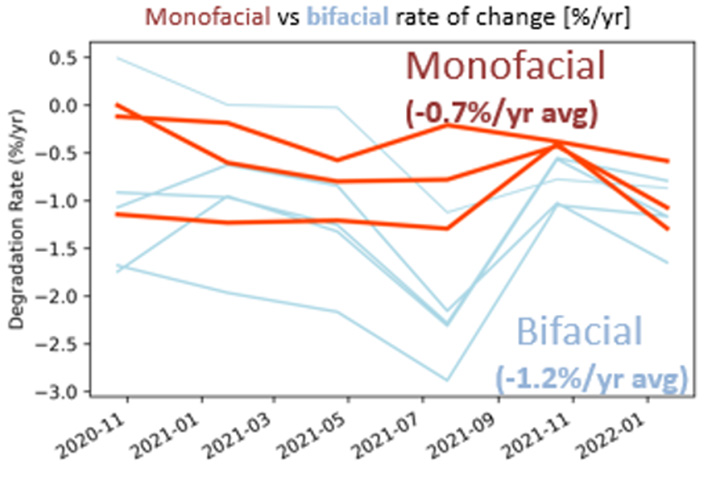Investigating Degradation of Bifacial PV Technologies in the Field
DuraMAT aims to investigate the source of accelerated degradation in early-generation bifacial photovoltaic (PV) technologies and release the investigation approach and findings.
The single-axis tracked bifacial field at the National Renewable Energy Laboratory (NREL) is unique because it incorporates five different technologies of bifacial PV modules with side-to-side monofacial counterparts. We have observed accelerated degradation for various of this early-generation bifacial technologies deployed relative to monofacial counterparts.
Core Objective
Location
NREL
Applications
The methodology applied will present a clear step-by-step process for PV owners and researchers to follow for investigating observed field degradation of monofacial and bifacial modules, tying into open-source tools analysis and modeling as well as literature examples.
Availability
Data and the methodology following will be made openly available in DuraMAT's DataHub.
References
Sinha et al. (2021). Glass/glass photovoltaic module reliability and degradation: A review. Journal of Physics D: Applied Physics, 54(41), 413002.
Ayala Pelaez et al. Model and Validation of Single-Axis Tracking With Bifacial PV.
Contact
To learn more about this project, contact Silvana Ovaitt.

Initial Bifacial energy gain has a slight downward trend over 2.5 years. On average, bifacial PERC and Is-HJT are degrading faster than mono facial counterpart.